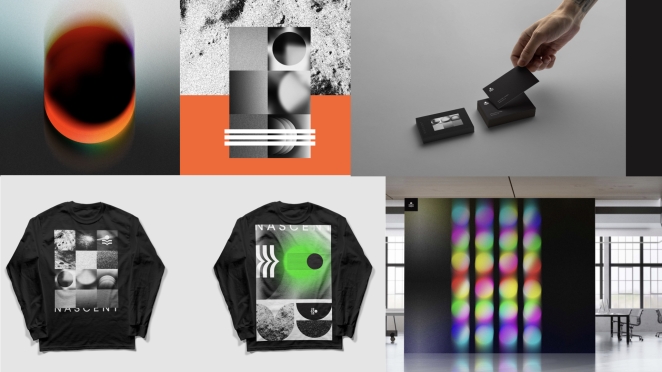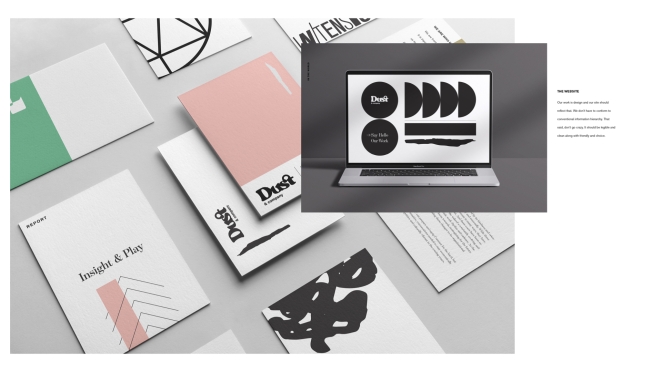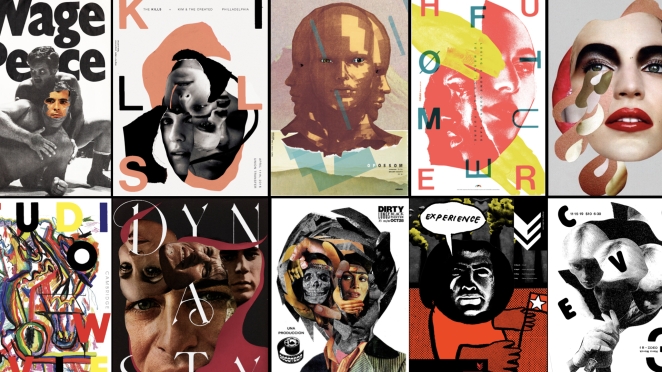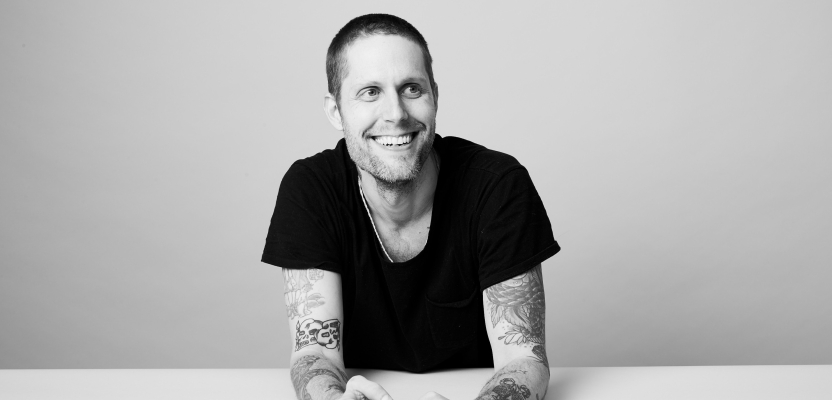Nicky Dupey is a creative executive and thought leader with a proven track record of unlocking innovative potential for teams and clients.
As a multidisciplinary designer and seasoned professional with over 20 years’ experience, he’s worked with a wide range of clients including Ford, Target, Sanofi, City of Boston, American Refugee Committee, Sealy, Sara Lee, MIT, Harvard University and the United States Citizenship and Immigration Service.
Nick defines his career by his passion for helping design cultures thrive as well as the belief that creativity is a defining characteristic of humanity. As an outspoken advocate for equitable creative processes, he believes in the power of community-centered design as a catalyst for positive change in the world.
His career has been defined by my passion for helping design cultures thrive and the belief that creativity is a defining characteristic of humanity. He builds upon this passion with his recent appointment as Head of Experience Design at co:collective.
We caught up with the man himself this week to discuss where he’s been, where he’s going and why he wants to get there.
Tell us a bit about your role! Is there a “typical” day?

A typical day at co: collective starts with coffee and drawing. I’m a morning person and a family person, so once the kids are out of the door, I like to turn on some music and get in the right headspace to approach the day with a creative mindset. Sometimes the drawings I make come into my work, but it is often just a way to keep my creative fluency going.
From there, I usually jump into meetings or creative sessions with teams or clients. I often work remotely, so my goal is to make creative connections with the people I am working with - asking questions/having conversations that elicit inspiration for whatever project we might be working on. Again, the creative health of the work is crucial and, honestly, the most fun way of being.
We work with a wide range of clients, from the Googles and IBMs of the world to smaller startups, and it is important to keep them involved and inspired, as it is for the team. That said, I spend a lot of time trying to help them find joy in getting outside of their comfort zone. I want their time spent with co: to be the most fulfilling part of their day.
What was the biggest challenge in getting to your current position?
I think the hardest part has been the transition from designing things with clients, to thinking about what it means to design the environment where ideas can flourish and seeing those relationships as a fulfilling design medium in its own right. In that way, I see myself as part teacher, part collaborator.
But it's a tough transition when you are coming from a world where your identity is so tied up in the things that you produced, so when I get to work in the morning I always remind myself that I am designing a studio and I am designing relationships. That perspective keeps me rooted in the whole ‘makingness’ of it all.
What is your personal background and what role did it play in your career?

I grew up in Chattanooga, Tennessee and was part of an amazing DIY art/music community there. It’s there that I realized the power of cultivating creative relationships with people. Having that sense of community instilled in me the desire to create moments of togetherness where people can be themselves and be brave. It’s helped me seek out studios where I can be part of a creative alchemy vs. something that feels more transactional.
In Chattanooga, I started an art/design collective called Young Monster as an excuse to work with some of my creative heroes like Zach Hobbs, Scott Campbell, and Alison Burke. We had this gang that pushed each other to be better and gave us the chance to design for the music community that was so important to us.
That kind of alchemy and togetherness is a big deal to me, and I love it when you get that feeling with anyone I get the chance to co-create with.
What is your biggest career-related win? What is your biggest loss?
Winning and losing is a tough question to answer! To me, it's more about satisfaction and purpose.
My favorite collaborator so far in my career has been with a humanitarian aid organization called Alight. I initially started working with them at IDEO where we helped them rebrand around their purpose of helping displaced people build their future through a shared abundance.
As this relationship has progressed over the years, I’ve had the opportunity to work with them in a community-centered way to design around topics like building new perspectives and strategies to their global office of the people or what it means to connect and grow talent in a constantly changing global setting.
Which individuals and/or agencies do you gain inspiration from? Do you have any heroes in the industry?

My heroes have tended to be my friends or co-creators. I ignore other agencies and focus on great work and great creative humans. I love Jane Fulton Suri for the humanity she brings to research. She is one of the most thoughtful people I have ever met.
Another wonderful designer who has always inspired me is Matt Brown (former IDEO). He helped me understand that creativity and curiosity are not just something you do but a way of being. He has always helped me see the world as a place of pure fantasy and imagination.
The last one is Zach Hobbs. He is one of the best visual creative thinkers in the world. He constantly pushes boundaries and creates a voice that is like no other.
I can’t forget my new partners, Jess Mireau, Namreta Kumar, and Nathan Braceros, at co:collective! They have me feeling like I am part of a creative gang again. Working with them gives me this feeling that there is nothing we can’t do.
If you could go back to your teenage years, would you have done things differently? Do you have any regrets?
Not a lot of regrets. I was a teenage weirdo, and being a teenager sucks in general, so, when I look back at that time, I see it as a moment when I started to find my voice and form the identity of who I am today.
I always kind of knew that I wanted my life to be centered around creative pursuits, and I see that time as a moment where I grew a thick skin and made that a reality.
If you weren’t in your current industry, what would you be doing?

I think I would like to be an art teacher or studying art history somewhere—either that or playing music and painting.
What’s your one big dream for the future of the industry?
Design is at an interesting crossroads. Things like Human Centered Design and Design Thinking have kind of had their moment and are evolving into something better and less exclusive.
My dream/goal is for people to see the value and imperative of living as a creative human being. What we do – being curious, creative, and abstract – is an enriching process in its own right. So, I hope in the future we can help bring more people into that joyous process, not just for outcomes, but for the sheer delight of participating in building things together.
What are your top tips for aspiring creative professionals?

Be brave in seeking out the people you want to build with. Other creatives are just sitting out there, and there is nothing stopping you from reaching out and making friends. If you love someone's work, let them know it, and see if they want to jam with you!
The other thing is to think about your process and what your creativity requires. A clock doesn’t dictate our work; creative work is bound by our ability to gather inspiration and express it. Feed your process.
What are your top tips for other creative leaders?
Learn how to grow people while letting them inspire you. You may be a leader, but you are first and foremost, a collaborator, so it has to be an inspiration back and forth.
Use your experience to inspire people and build creative conditions for people to thrive. (And do the same thing for yourself).
When you think about your team, what is the thing that matters to you the most?
Bravery and honesty. We should always feel comfortable giving our creative opinion because that is what moves excellent work forward.
Do you have any websites, books or resources you would recommend?

I still like books! I often find myself coming back to Paul Rand’s Thoughts on Design because of its simplicity and elegance around the topic. The same goes for Bruno Munari’s Square Circle Triangle - legendary stuff.
A more contemporary book I love is CAPS LOCK: How Capitalism Took Hold of Graphic Design, and How to Escape from It by Ruben Parker. It’s a fantastic group of essays that offer an expansive view of the problematic aspects of design in our culture that offers a great perspective on what the future might hold for the industry.






